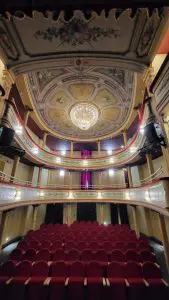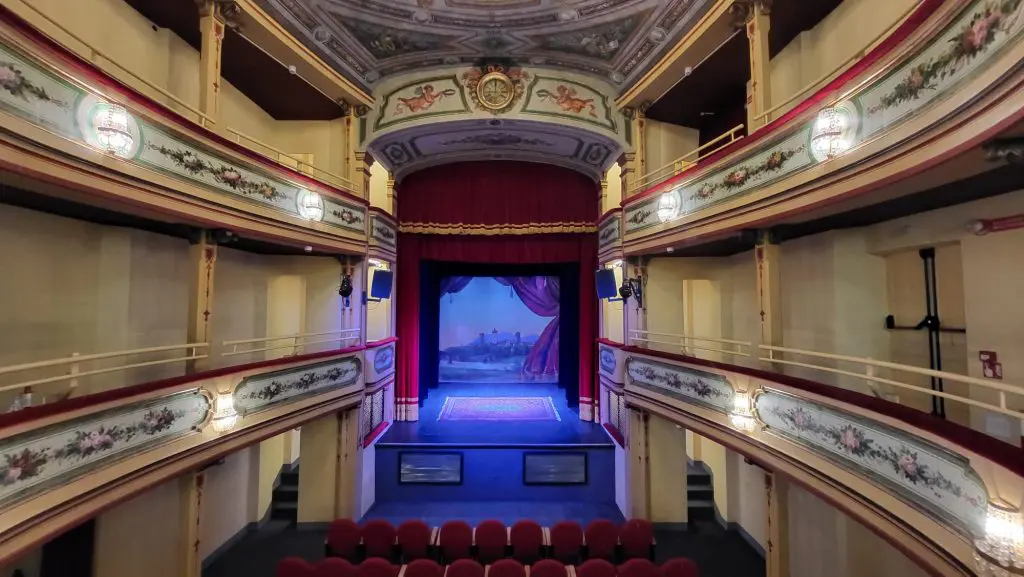There is a hidden treasure in the historic center of a small town in Canavese, just half an hour from Turin. A small architectural gem set in a former convent of Benedictine nuns. Until recently, no one could admire it, but now it has reopened to the public.
After more than 40 years of silence and inactivity, the curtain is rising again, the stage lights are turning on, and the doors are opening to the entire community. This is the story of the Tullio Pinelli Theater in Cuorgné, a historic space with many lives, all significant for the area, albeit in different ways.
 A 17th-century church became a theater in 1886. Following the Napoleonic suppression of religious orders, the municipality acquired the building and radically transformed it according to the design by architect Pier Giuseppe Zerboglio: a stage and horseshoe-shaped audience area, two tiers of galleries, and four proscenium boxes for a total of about a hundred seats were created with the addition of a finely decorated wooden structure. Above it the original stucco decorations are still preserved.
A 17th-century church became a theater in 1886. Following the Napoleonic suppression of religious orders, the municipality acquired the building and radically transformed it according to the design by architect Pier Giuseppe Zerboglio: a stage and horseshoe-shaped audience area, two tiers of galleries, and four proscenium boxes for a total of about a hundred seats were created with the addition of a finely decorated wooden structure. Above it the original stucco decorations are still preserved.
In 1919, the municipality left the management of the building, and in the 1920s, the Pinelli became one of the first cinema-theaters in Alto Canavese. Operettas, concerts, and screenings alternated on the stage, thanks to the curiosity and passion of the Perona family, who still renew the magic of cinema in the town to this day. Their fascinating history is told in the 2017 documentary “Cinematografica Perona,” produced by the Cromocinque Collective with the support of the Fondazione Sviluppo e Crescita CRT and the Mario L. G. Ceretto Archive.
In 1983, the tragedy of the Cinema Statuto marked a turning point in public venue safety regulations. Throughout Italy, many cinemas and theaters had to be adapted to the new standards and closed. This included the Pinelli Theater.
After decades of neglect, the theater has been revived through restoration: six years of work have restored the building to its original splendor. In particular, the intervention on the wooden decorations, supported by the Fondazione CRT in 2019 through the Restauri – Cantieri Diffusi call, restored the brightness of the colors to the inlays and floral decorations. The stage backdrops, painted by artists from the Rivara school, were also recovered, including a view of Cuorgné attributed to the master Carlo Pittara.
Starting in September, the theater will have a new program, with the management entrusted to the Turin associations Smartopera, which promotes and disseminates performing arts, particularly classical, opera, and symphonic music, and Fools, which has made Teatro Vanchiglia “a home with a theater inside,” a cultural reference point in Turin and beyond. The goal is to create a new community around the Tullio Pinelli Theater, to make it a center of culture and participation, and to bring the wonder of the past to inspire the creativity of the present.


